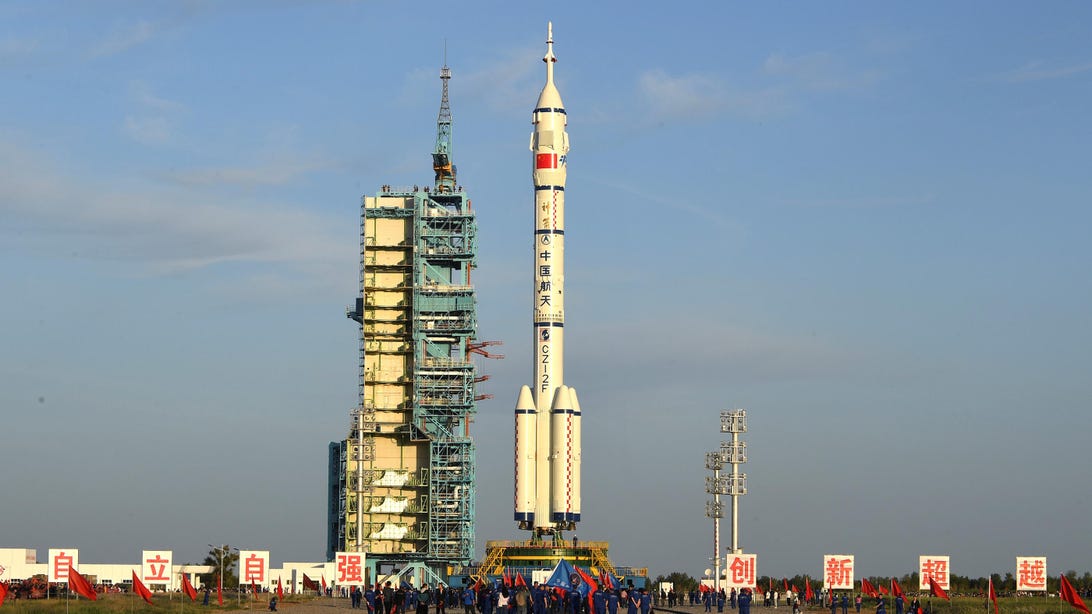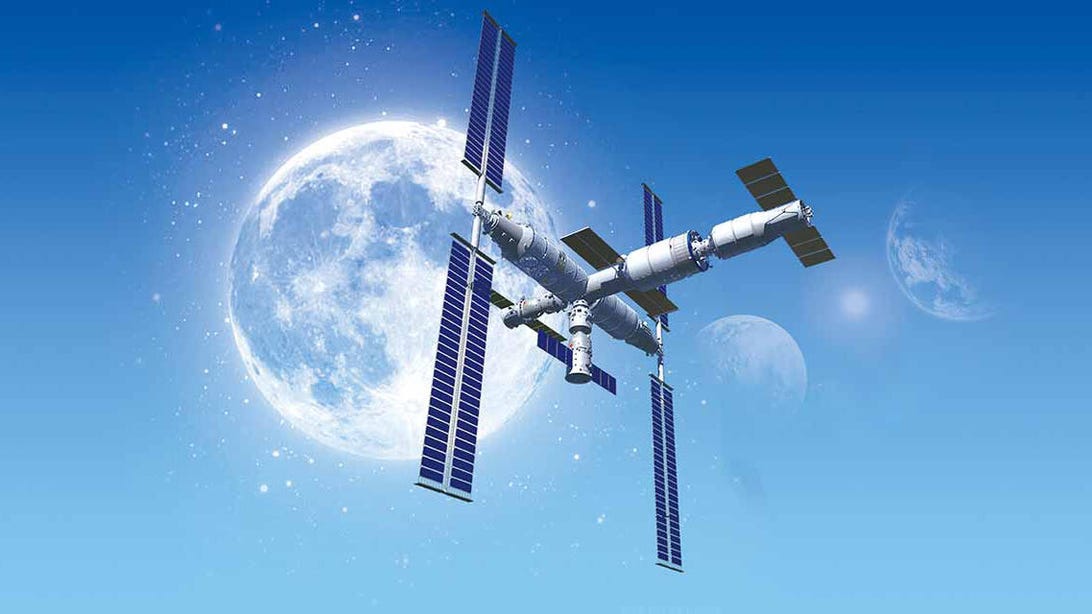
The Shenzhou-12 spacecraft will deliver three Chinese taikonauts to the core module of China's space station, Tianhe.
Getty/Xinhua News AgencyThree Chinese astronauts are heading to the country's recently launched space station to spend approximately three months in the Tianhe core module. The Shenzhou-12 spacecraft will launch from the Jiuquan Satellite Launch Center in the Gobi Desert in northern China.
The launch is expected to occur at 9:22 a.m. local time Thursday, which equates to 6:22 p.m. PT on Wednesday. Will we be able to watch along? That's an open question. Chinese state media may carry a livestream of the launch, and we'll post it here as soon as we know.
Why is the crewed flight such a big deal? It's the first time in five years that China is sending "taikonauts" -- Chinese astronauts -- to space. The three taikonauts selected to travel on the flight are Nie Haisheng, Liu Boming and Tang Hongbo. Haisheng has flown on two previous flights, while Boming has flown on one. This will be the first flight for Hongbo.
China's last crewed launch took place on Oct. 17, 2016, and docked with the China's last space station, Tiangong-2. That station no longer orbits the Earth, having been deliberately deorbited in July 2019.
Heavenly bodies
In April, China began construction of its next-generation space station with the launch of the Tianhe core module. Two additional modules will be launched in the coming 18 months, but Tianhe is ready for habitation now. When complete, the station will provide a human outpost in low-Earth orbit for China, allowing the country and partner countries to perform science experiments for the next decade.
Speaking at a press conference on Tuesday, Ji Qiming, of the China Manned Space Agency, said the mission will look to complete a few main objectives relating to verification of key technologies:
- Astronaut long-duration, in-orbit stays
- Regenerative environment control and life support
- Crew and materials resupply
- Extra vehicular activities and operations
- In-orbit maintenance
Provided all goes well with the launch, the fledgling station will become the only other operational space habitat outside of the International Space Station. It will be about a quarter of the size of the ISS when construction is completed in 2022. The upcoming Shenzhou 12 launch is the first of four crewed flights to help construct the station.

The core module of the Chinese Space Station launched in April.
CMSWhy is China building a space station?
Space science and human spaceflight capabilities, mostly, with a healthy side of geopolitics.
The US Congress passed a law preventing American contact with China's space program in 2011, effectively barring China and its taikonauts and scientists from participating in missions to the ISS.
China launched its own space station, Tiangong-1, that same year. It operated for just over four years before its service was ended. China's space program conceded it lost control of the station in early 2016 and, two years later, it came crashing down, landing in the Pacific Ocean. A follow-up station, Tiangong-2, was launched in 2016 and deliberately deorbited in 2019. Both provided a test bed for the new Chinese space station, which is simply named Tiangong.
The new station is expected to orbit at around 230 miles above the Earth, about 20 miles lower than the ISS, with the ability to move up and down in orbit as necessary.
Deorbit
After the launch of the Tianhe core module back in April, the world was transfixed by the spent rocket booster, used to get Tianhe to orbit, and its descent back to Earth. Its deorbit was uncontrolled, raising concerns it may crash back into a populated area of the planet. Fortunately, Earth contains a lot of unpopulated areas -- and the booster crashed into the Indian Ocean, though not too far from the Maldives.
The Long March 2F rocket is slightly different to the Long March 5B used in that mission, but there have been questions over China's handling of the deorbit process. One of the first questions journalists at the conference press Qiming on was how China was preparing for Shenzhou 12's booster to fall back to Earth.
"The last stages of all types of launchers that perform the space station missions have been treated with passivation technology and will not explode in orbit and generate space debris," Qiming, who seemed to read from a prepared statement, said via a translator.
"We're willing to conduct more extensive international exchanges and cooperation with other countries on the issues of manmade spacecraft wreckage and space debris to ensure the long term sustainability of outer space activities."
Watch the Shenzhou-12 launch
It's currently unclear if the Shenzhou 12 launch will be televised. The Chinese space agency does not typically provide livestreams -- though this may be changing. The Tianhe launch was carried by CCTV and other Chinese state media services on YouTube. Once we get a link, we'll throw it up here.
from CNET https://ift.tt/2SGblun
via IFTTT



No comments:
Post a Comment